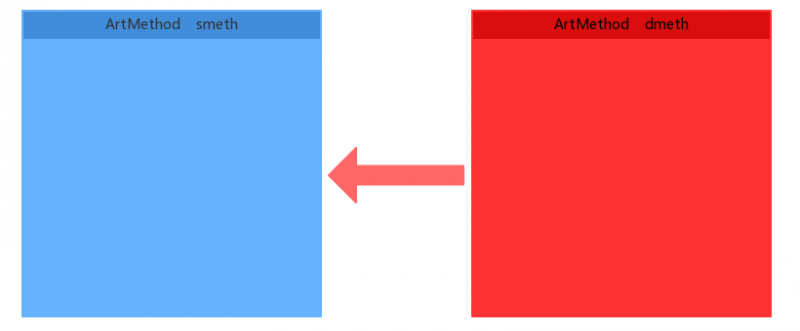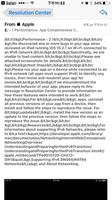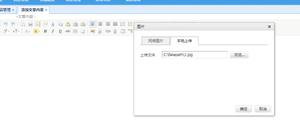从核心数据加载UICollectionView
我正在开发一个iOS应用程序,并在某个时间点存储用户在Core Data中绘制的图像。 现在我想将所有录制的图像加载到UICollectionView中,以便用户可以选择一个并在社交网络上共享。 除了这最后一部分,我的应用程序中的所有东西都可以工作。 我跟着网上的各种教程,但我可以在UICollectionView上找到的所有例子都是使用来自Flickr或类似网站的图片。从核心数据加载UICollectionView
这是我在这一点上代码:
#import "LibraryViewController.h" (The name of the class we're in) #import "SocialViewController.h"
#import "CollectionViewCell.h"
static NSString *cellIdentifier = @"MemeCell";
@implementation LibraryViewController {
NSMutableArray *_objectChanges;
NSMutableArray *_sectionChanges;
}
#pragma mark - View Controller LifeCycle
- (void)awakeFromNib
{
[super awakeFromNib];
}
- (void)viewDidLoad
{
[super viewDidLoad];
_objectChanges = [NSMutableArray array];
_sectionChanges = [NSMutableArray array];
self.title = @"Meme collection";
}
- (void)didReceiveMemoryWarning
{
[super didReceiveMemoryWarning];
// Dispose of any resources that can be recreated.
}
- (void)prepareForSegue:(UIStoryboardSegue *)segue sender:(id)sender
{
if ([[segue identifier] isEqualToString:@"share"]) {
NSIndexPath *indexPath = [[self.collectionView indexPathsForSelectedItems] lastObject];
NSManagedObject *object = [[self fetchedResultsController] objectAtIndexPath:indexPath];
SocialViewController *destViewController = segue.destinationViewController;
[destViewController setDetailItem:object];
}
}
#pragma mark - UICollectionView
- (NSInteger)collectionView:(UICollectionView *)collectionView numberOfItemsInSection:(NSInteger)section
{
id <NSFetchedResultsSectionInfo> sectionInfo = [self.fetchedResultsController sections][section];
return [sectionInfo numberOfObjects];
}
- (UICollectionViewCell *)collectionView:(UICollectionView *)collectionView cellForItemAtIndexPath:(NSIndexPath *)indexPath
{
CollectionViewCell *cell = (CollectionViewCell *)[collectionView dequeueReusableCellWithReuseIdentifier:cellIdentifier
forIndexPath:indexPath];
NSManagedObject *object = [self.fetchedResultsController objectAtIndexPath:indexPath];
[cell setImage:[UIImage imageWithData:[object valueForKey:@"image"]]];
return cell;
}
#pragma mark - Fetched results controller
- (NSFetchedResultsController *)fetchedResultsController
{
if (_fetchedResultsController != nil) {
return _fetchedResultsController;
}
NSFetchRequest *fetchRequest = [[NSFetchRequest alloc] init];
// Edit the entity name as appropriate.
NSEntityDescription *entity = [NSEntityDescription entityForName:@"Meme" inManagedObjectContext:self.managedObjectContext];
[fetchRequest setEntity:entity];
[fetchRequest setFetchBatchSize:20];
NSFetchedResultsController *aFetchedResultsController = [[NSFetchedResultsController alloc] initWithFetchRequest:fetchRequest managedObjectContext:self.managedObjectContext sectionNameKeyPath:nil cacheName:@"Master"];
aFetchedResultsController.delegate = self;
self.fetchedResultsController = aFetchedResultsController;
NSError *error = nil;
if (![self.fetchedResultsController performFetch:&error]) {
// Replace this implementation with code to handle the error appropriately.
// abort() causes the application to generate a crash log and terminate. You should not use this function in a shipping application, although it may be useful during development.
NSLog(@"Unresolved error %@, %@", error, [error userInfo]);
abort();
}
return _fetchedResultsController;
}
- (void)controller:(NSFetchedResultsController *)controller didChangeSection:(id <NSFetchedResultsSectionInfo>)sectionInfo
atIndex:(NSUInteger)sectionIndex forChangeType:(NSFetchedResultsChangeType)type
{
NSMutableDictionary *change = [NSMutableDictionary new];
switch(type) {
case NSFetchedResultsChangeInsert:
change[@(type)] = @(sectionIndex);
break;
case NSFetchedResultsChangeDelete:
change[@(type)] = @(sectionIndex);
break;
}
[_sectionChanges addObject:change];
}
- (void)controller:(NSFetchedResultsController *)controller didChangeObject:(id)anObject
atIndexPath:(NSIndexPath *)indexPath forChangeType:(NSFetchedResultsChangeType)type
newIndexPath:(NSIndexPath *)newIndexPath
{
NSMutableDictionary *change = [NSMutableDictionary new];
switch(type)
{
case NSFetchedResultsChangeInsert:
change[@(type)] = newIndexPath;
break;
case NSFetchedResultsChangeDelete:
change[@(type)] = indexPath;
break;
case NSFetchedResultsChangeUpdate:
change[@(type)] = indexPath;
break;
case NSFetchedResultsChangeMove:
change[@(type)] = @[indexPath, newIndexPath];
break;
}
[_objectChanges addObject:change];
}
- (void)controllerDidChangeContent:(NSFetchedResultsController *)controller
{
if ([_sectionChanges count] > 0)
{
[self.collectionView performBatchUpdates:^{
for (NSDictionary *change in _sectionChanges)
{
[change enumerateKeysAndObjectsUsingBlock:^(NSNumber *key, id obj, BOOL *stop) {
NSFetchedResultsChangeType type = [key unsignedIntegerValue];
switch (type)
{
case NSFetchedResultsChangeInsert:
[self.collectionView insertSections:[NSIndexSet indexSetWithIndex:[obj unsignedIntegerValue]]];
break;
case NSFetchedResultsChangeDelete:
[self.collectionView deleteSections:[NSIndexSet indexSetWithIndex:[obj unsignedIntegerValue]]];
break;
case NSFetchedResultsChangeUpdate:
[self.collectionView reloadSections:[NSIndexSet indexSetWithIndex:[obj unsignedIntegerValue]]];
break;
}
}];
}
} completion:nil];
}
if ([_objectChanges count] > 0 && [_sectionChanges count] == 0)
{
[self.collectionView performBatchUpdates:^{
for (NSDictionary *change in _objectChanges)
{
[change enumerateKeysAndObjectsUsingBlock:^(NSNumber *key, id obj, BOOL *stop) {
NSFetchedResultsChangeType type = [key unsignedIntegerValue];
switch (type)
{
case NSFetchedResultsChangeInsert:
[self.collectionView insertItemsAtIndexPaths:@[obj]];
break;
case NSFetchedResultsChangeDelete:
[self.collectionView deleteItemsAtIndexPaths:@[obj]];
break;
case NSFetchedResultsChangeUpdate:
[self.collectionView reloadItemsAtIndexPaths:@[obj]];
break;
case NSFetchedResultsChangeMove:
[self.collectionView moveItemAtIndexPath:obj[0] toIndexPath:obj[1]];
break;
}
}];
}
} completion:nil];
}
[_sectionChanges removeAllObjects];
[_objectChanges removeAllObjects];
}
@end
当我运行,并尝试访问该视图控制器,应用程序崩溃与此错误消息: 2013年7月25日23:08:11.832 MemeGen [ 87259:C07] *终止应用程序由于未捕获的异常“NSInvalidArgumentException”,原因是:“+ entityForName:无不是合法的NSManagedObjectContext参数搜索实体名称‘梅梅’” *第一掷调用堆栈:
和它指向这行代码:
NSEntityDescription *entity = [NSEntityDescription entityForName:@"Meme" inManagedObjectContext:self.managedObjectContext]; 显然self.managedObjectContext为零。 我应该如何分配它?当用户首次启动应用程序并且核心数据为空时,我应该如何管理它?禁止访问,只要没有图像?
否则,我知道如何将绘制图像存储在文件系统上。如果有人知道在UICollectionView中加载它的方法,它也可能是我可以接受的解决方案。
回答:
您将希望获得对您的ManagedObjectContext的引用。通常这会在应用程序委托中创建。在这种情况下,你会想这样的事情 -
NSManagedObjectContext *aManagedObjectContext = ((AppDelegate *)[UIApplication sharedApplication].delegate).managedObjectContext; 如果你愿意,你可以做到这一点在你的viewDidLoad并将其分配给self.managedObjectContext。
回答:
除非您使用外部存储功能,否则我不建议将图像存储在核心数据中。大的二进制对象很少是你想要存储在核心数据之类的东西。当然,您可以将文件系统路径或URL存储在指向文件系统映像的核心数据对象上。
要使用带有UICollectionView的Core Data,请查看NSFetchedResultsController。 这里有一个example使用这两者来帮助你入门。
以上是 从核心数据加载UICollectionView 的全部内容, 来源链接: utcz.com/qa/260001.html






